
Why Brand Awareness Depends on Multiple Touch Points Today
Do you know what a brand awareness touchpoint is and how it is vital to your SEO success? If not, read on!
The Changing Face of Online Search
Gone are the days when search engine optimisation alone could drive steady traffic and sales. While SEO remains a pillar of online visibility, the way people discover, engage with, and decide to trust a company has fundamentally changed. Businesses that once relied on top rankings for conversions are now seeing impressions rise while clicks drop. Why? Because customers are encountering your brand in far more places than just your website, and it takes multiple brand touchpoints before they act.
According to NP Digital, modern consumers now need more than 11 distinct interactions with a brand before converting. These touchpoints are scattered across Google, AI platforms like ChatGPT, social media, video content, reviews, directories, and more. In this new world, tracking and valuing every point of contact has become essential for building trust and driving action.
The Decline of Click-Through Rates on Google
Traditionally, the goal of SEO was simple: rank high, get clicks, and convert. But recent shifts in search behaviour show that high-ranking search results no longer guarantee high click-through rates (CTR).
This decline in CTR is largely driven by the evolution of the search results page (SERP). Google now populates its results with sponsored ads, AI overviews, Knowledge Panels, Maps, and user-generated content sections like “Discussions and Forums.” While this may offer a better user experience, it means fewer users are clicking through to external websites. Instead, they gather everything they need from the search page itself. As a really simple example of how this works, in the dark days of yesteryear, when a potential client wanted specific service, they would search for it, be presented with several website links, and then choose one or more to click through to. Once there, they might find your contact page and reach out to you via email or telephone, or read some of your content to decide if you would be the company for them. Now, Google, understanding that for most potential visitors they just want some contact details, offers up the Google Business Page information, giving away your phone number, address and even showing off Google reviews and other trust indexes.
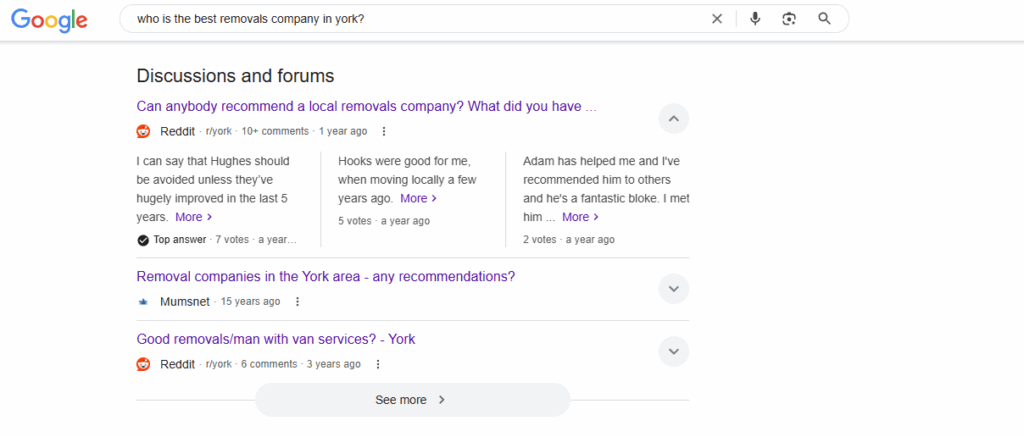
For businesses, this means your visibility no longer depends solely on whether someone visits your site. Instead, it’s about whether your brand shows up, and shows up consistently, across multiple areas of the search experience.
The Rise of AI-Enhanced Results and Information Panels
The recent roll-out of AI features like Google’s Search Generative Experience (SGE) and ChatGPT’s web-integrated results has added new dimensions to brand exposure. These platforms pull information from multiple sources to generate a synthesised answer. If your business is mentioned or featured in this AI summary, it becomes a powerful new touchpoint, even if no one clicks through.
AI results often come with an “information panel,” “Find results on” carousel, or links to other sources, meaning visibility here can create brand awareness at scale. However, many businesses don’t even realise they’re being mentioned in these contexts because they’re not trackable in the traditional sense.
This makes monitoring AI-based touchpoints difficult but vital. Tools like Google Search Console don’t yet offer analytics for these inclusions, and AI mentions don’t always show up in referral traffic. Still, these are moments where trust is built and familiarity grows.
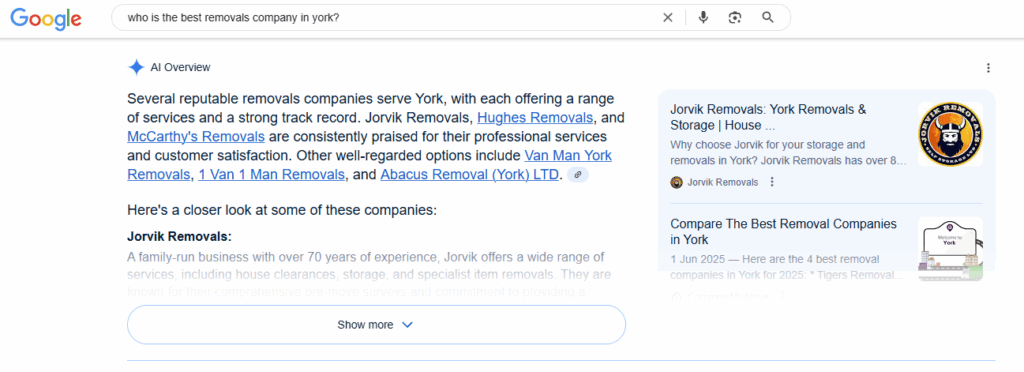
Sponsored Listings and Google Ads as High-Exposure Touchpoints
Another major evolution in the SERP is the prevalence of sponsored placements. These often occupy the first few positions, above the fold, and are labelled subtly. For some users, especially those on mobile devices, these ads are indistinguishable from organic results.
Even if users don’t click, repeated exposure to your business name in these top positions builds familiarity, particularly if your ads show up consistently for relevant search terms. It’s a paid touchpoint that contributes to the larger awareness journey, even if immediate ROI is hard to measure.
Google’s recent experiments with “sponsored” tag designs suggest it wants to maintain ad prominence without disrupting user trust. For businesses, this reinforces the idea that ad visibility has brand value, not just direct response potential.

Google Maps: The Local SEO Battleground
For service-based businesses like removals, Google Maps is now one of the most important brand awareness arenas. Appearing in the local “3-pack”, the three business listings shown under the map on local searches, dramatically increases exposure.
These results are heavily influenced by proximity, reviews, and local SEO factors. Crucially, users don’t need to click through to count the interaction as a touchpoint. Seeing your company name and star rating alongside others can plant a seed of familiarity that builds trust over time.
If your removals company is visible in Google Maps today, that could be one of the 11+ interactions a user needs before they finally get in touch.
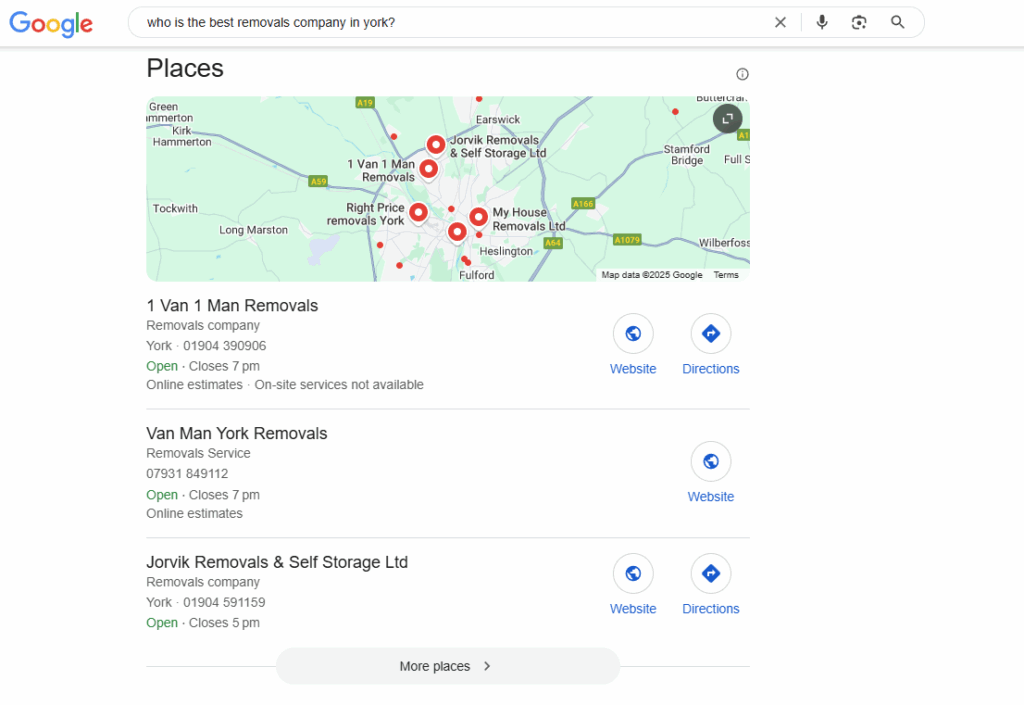
Reviews: The Silent Conversions Engine
In a world with fewer clicks and more skimming, online reviews are doing heavy lifting for your brand.
When potential customers see your name accompanied by hundreds of positive reviews, it tells them everything they need to know without clicking. Google Reviews, Trustpilot, Facebook Reviews, and even comments on Reddit or local forums all act as third-party validations that you’re real, reliable, and worth contacting.
Often, these reviews show up as snippets in Google’s AI overviews, Maps listings, or “Discussions and Forums” sections. Each review is another touchpoint, reinforcing that people trust you, even if the user doesn’t actively engage yet.

The Emergence of Social Platforms as Search Engines
Platforms like TikTok, YouTube, and Instagram are no longer just social media, they are search engines in their own right. Increasingly, users are searching directly within these platforms for services, products, and reviews.
For instance, a potential client might search “house removals tips” on Instagram and find a video from your company offering advice, showing methods, or just getting on with work. Even if they don’t follow you or visit your website, you’ve earned a touchpoint.
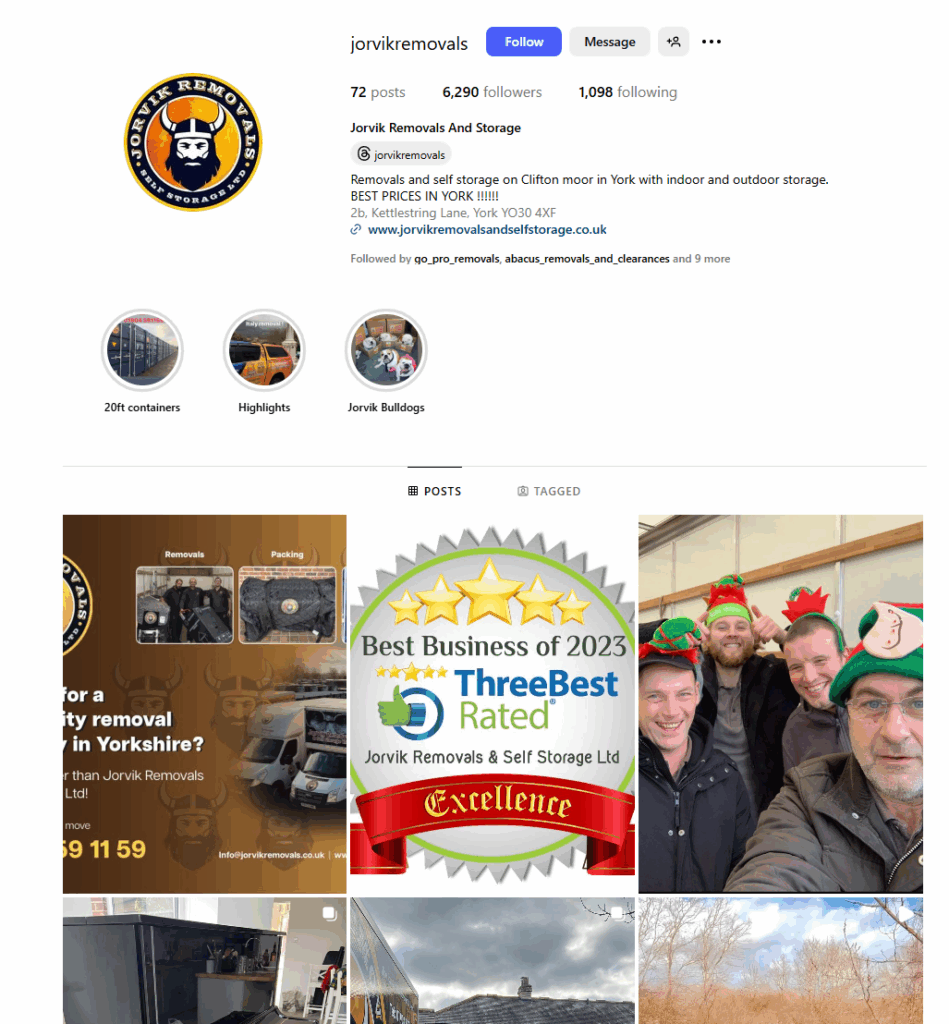
Likewise, Facebook groups discussing moving house, or YouTube videos featuring packing tutorials, can include mentions of your brand. These platforms offer a more immersive, community-driven experience, and brands that show up consistently within them benefit from repeated exposure in a natural, trust-building context.
Forums, ChatGPT, and User-Generated Mentions
One increasingly influential yet hard-to-track channel is user-generated content. When someone recommends your company in a Reddit thread or a Facebook community, that informal endorsement carries real weight.
In spaces like forums or ChatGPT prompts, your brand can surface organically as a trusted recommendation. For instance, if a user asks, “Who are the best house removal companies in the UK?”, and your business appears in the answer, it creates a powerful moment of brand validation, without you lifting a finger.


These mentions act as crucial touchpoints in the buyer’s journey. While they’re difficult to measure with precision, they shape perception and influence decisions.
Importantly, the impact of AI-generated traffic is only set to increase. Public trust in AI recommendations is growing rapidly, supported by the seamless integration of AI into everyday search habits. People are not only turning to AI tools like ChatGPT, Deepseek, and Perplexity for opinions and options, but they’re also more inclined to act on those suggestions, treating them with the same trust once reserved for personal recommendations.
What’s more, the accessibility of these tools is accelerating adoption. Google’s Search Generative Experience and Microsoft Bing now offer AI-powered search results for free. Tools like ChatGPT and Deepseek provide open access without subscription fees, removing previous barriers and expanding their user base.
This democratisation of AI search means that if your brand is positioned to be mentioned in these responses, through strong SEO, positive online sentiment, and presence on authoritative sites, you are essentially entering a new kind of search engine. One that’s curated, conversational, and increasingly persuasive. Over time, brands that show up in AI answers may enjoy compounding visibility advantages as users come to trust and depend on AI for decisions big and small.
Organic Search Still Matters, But It’s No Longer the Whole Picture
And then, finally, we reach the Organic search results.
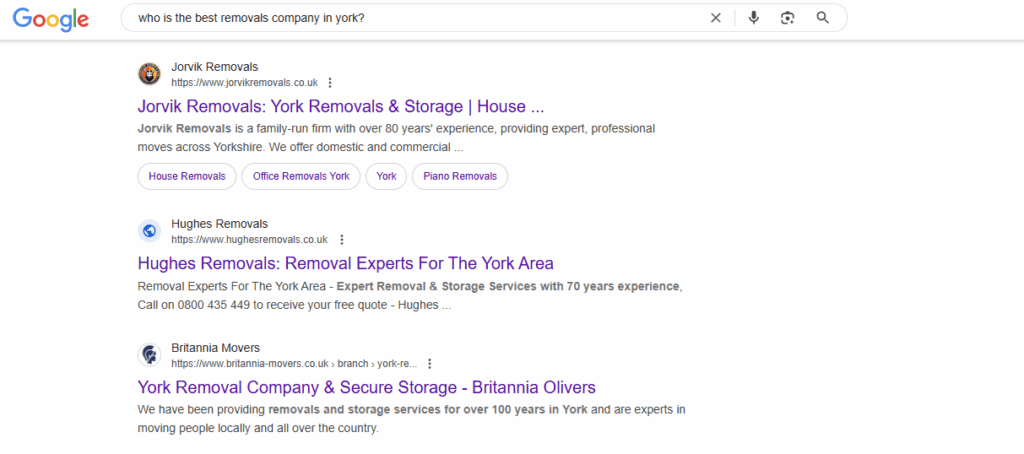
Despite the rapid evolution of the search landscape, traditional organic listings continue to play a vital role. They haven’t vanished, but they no longer dominate the way they once did. Ranking for high-intent, relevant keywords remains a cornerstone of effective digital marketing. It also reinforces your visibility within the Google Local Pack, which often pulls from strong organic signals. However, organic listings now represent just one of many possible touchpoints in a fragmented customer journey.
Users are often exposed to multiple forms of content before they even reach those classic blue links. AI-generated summaries, Maps results, featured snippets, review panels, and even discussion threads from forums like Reddit often appear above traditional listings. This means that by the time a user scrolls down to the organic section, they’re not always starting from zero. More likely, they’re refining an already forming opinion.
When someone does click through to your site from a traditional organic result, it’s usually not their first exposure to your brand. They may have seen your business mentioned in an AI response, found you on a listicle from a third-party directory, or read a review in the local map pack. Your organic link might be the first impression, but it could just as easily be the fifth, eighth, or tenth interaction.
This shifting role doesn’t diminish the value of organic search—it reframes it. Today, that listing often serves as a moment of validation or decision-making, not initial discovery. When your brand appears consistently across channels and is reinforced by trustworthy mentions, reviews, and AI summaries, your organic presence becomes the final nudge rather than the only pitch.
In short, organic SEO is still essential—but it now works best as part of a broader, multi-channel strategy that recognises the diversity of modern search behaviour. Strong rankings build trust. But trust is no longer built in a single step.
Why 11+ Touchpoints Are the New Normal
According to data from NP Digital and other marketing studies, modern users take longer to convert and need more exposure to brands before acting. This is especially true for high-trust purchases like removals, where customers are handing over their belongings and personal details.
The magic number is now over 11 touchpoints. These might include:
- Seeing your brand in a sponsored ad
- Glimpsing your Google Maps listing
- Watching a YouTube short you uploaded
- Reading a 5-star Google review
- Seeing a Facebook recommendation
- Finding you in a ChatGPT result
- Spotting your business in a Reddit thread
- Viewing your organic listing on page one
- Hearing your name in a podcast mention
- Seeing your van on the road
- Receiving a referral from a friend
- Direct mail correspondance
Individually, none of these moments may cause conversion. Together, they build a foundation of awareness and trust that eventually tips the scale.
What Can Businesses Do?
To compete in this new era of fragmented attention, businesses must widen their approach to marketing. Here are practical strategies:
- Track Beyond Clicks
Use tools like Brand24 or Google Alerts to see when your business is mentioned outside of your website analytics. Measure branded search volume over time to gauge awareness. - Invest in Social Presence
Create short-form content for YouTube Shorts, TikTok, and Instagram Reels to capture attention where your audience scrolls and searches. - Optimise for AI Mentions
Make sure your website has structured data, frequently updated content, and clear service area pages. These are key signals for AI engines pulling data. - Dominate Local SEO
Optimise your Google Business Profile, encourage reviews, and post updates regularly to stay visible in the Maps pack. - Encourage User-Generated Content
Ask customers to post about their experience on social media. A single post in a local Facebook group can generate trust faster than any ad. - Stay Consistent with Your Branding
Use the same name, logo, tone, and imagery everywhere. Repetition breeds familiarity, which is essential to recognition. - Monitor and Improve Reviews
Respond to every review, good or bad, and encourage satisfied clients to leave feedback. This is the most powerful social proof you have.
Your Brand Is Bigger Than Your Website
Brand awareness today is not about a single moment of discovery. It’s about layering impressions, mentions, and interactions until your company becomes the obvious choice. With fewer clicks and more noise, your challenge is to show up often, across as many relevant channels as possible.
From sponsored placements and AI answers to social media mentions and local map packs, each touchpoint contributes to your customer’s decision-making process. If you’re not thinking about all the ways your brand appears online, you’re missing half the picture and many potential customers.
If you’re ready to bring these threads together and want a guiding hand, Removalspal.com is ready to help you

